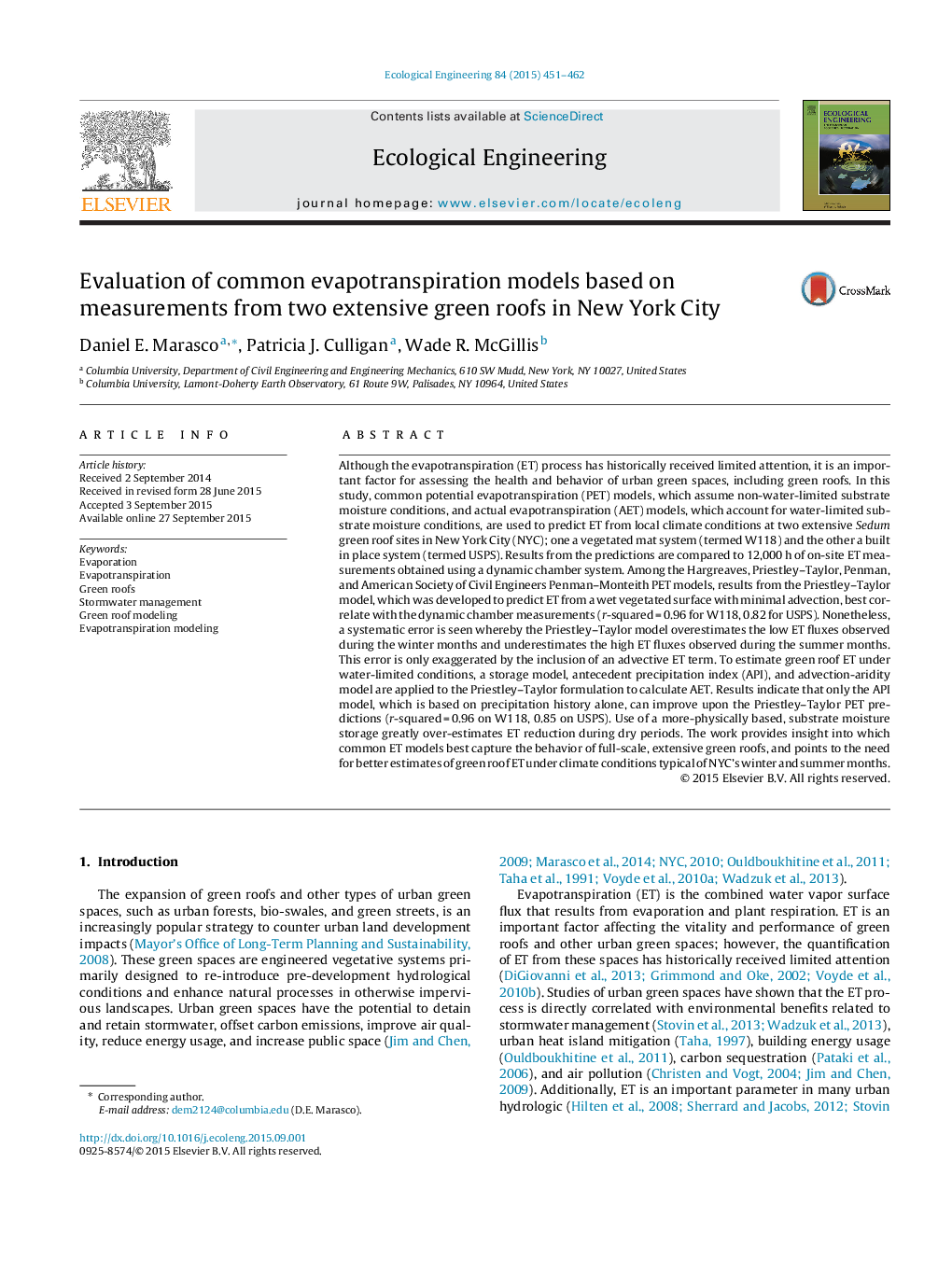| Article ID | Journal | Published Year | Pages | File Type |
|---|---|---|---|---|
| 4388814 | Ecological Engineering | 2015 | 12 Pages |
•Predictive evapotranspiration (ET) models were evaluated on green roofs.•For potential ET equations, Priestley–Taylor most closely predicted measured ET.•A precipitation index approximates effects of water limitations on ET.•A storage model underestimated summer ET and was highly sensitive to inputs.
Although the evapotranspiration (ET) process has historically received limited attention, it is an important factor for assessing the health and behavior of urban green spaces, including green roofs. In this study, common potential evapotranspiration (PET) models, which assume non-water-limited substrate moisture conditions, and actual evapotranspiration (AET) models, which account for water-limited substrate moisture conditions, are used to predict ET from local climate conditions at two extensive Sedum green roof sites in New York City (NYC); one a vegetated mat system (termed W118) and the other a built in place system (termed USPS). Results from the predictions are compared to 12,000 h of on-site ET measurements obtained using a dynamic chamber system. Among the Hargreaves, Priestley–Taylor, Penman, and American Society of Civil Engineers Penman–Monteith PET models, results from the Priestley–Taylor model, which was developed to predict ET from a wet vegetated surface with minimal advection, best correlate with the dynamic chamber measurements (r-squared = 0.96 for W118, 0.82 for USPS). Nonetheless, a systematic error is seen whereby the Priestley–Taylor model overestimates the low ET fluxes observed during the winter months and underestimates the high ET fluxes observed during the summer months. This error is only exaggerated by the inclusion of an advective ET term. To estimate green roof ET under water-limited conditions, a storage model, antecedent precipitation index (API), and advection-aridity model are applied to the Priestley–Taylor formulation to calculate AET. Results indicate that only the API model, which is based on precipitation history alone, can improve upon the Priestley–Taylor PET predictions (r-squared = 0.96 on W118, 0.85 on USPS). Use of a more-physically based, substrate moisture storage greatly over-estimates ET reduction during dry periods. The work provides insight into which common ET models best capture the behavior of full-scale, extensive green roofs, and points to the need for better estimates of green roof ET under climate conditions typical of NYC's winter and summer months.
